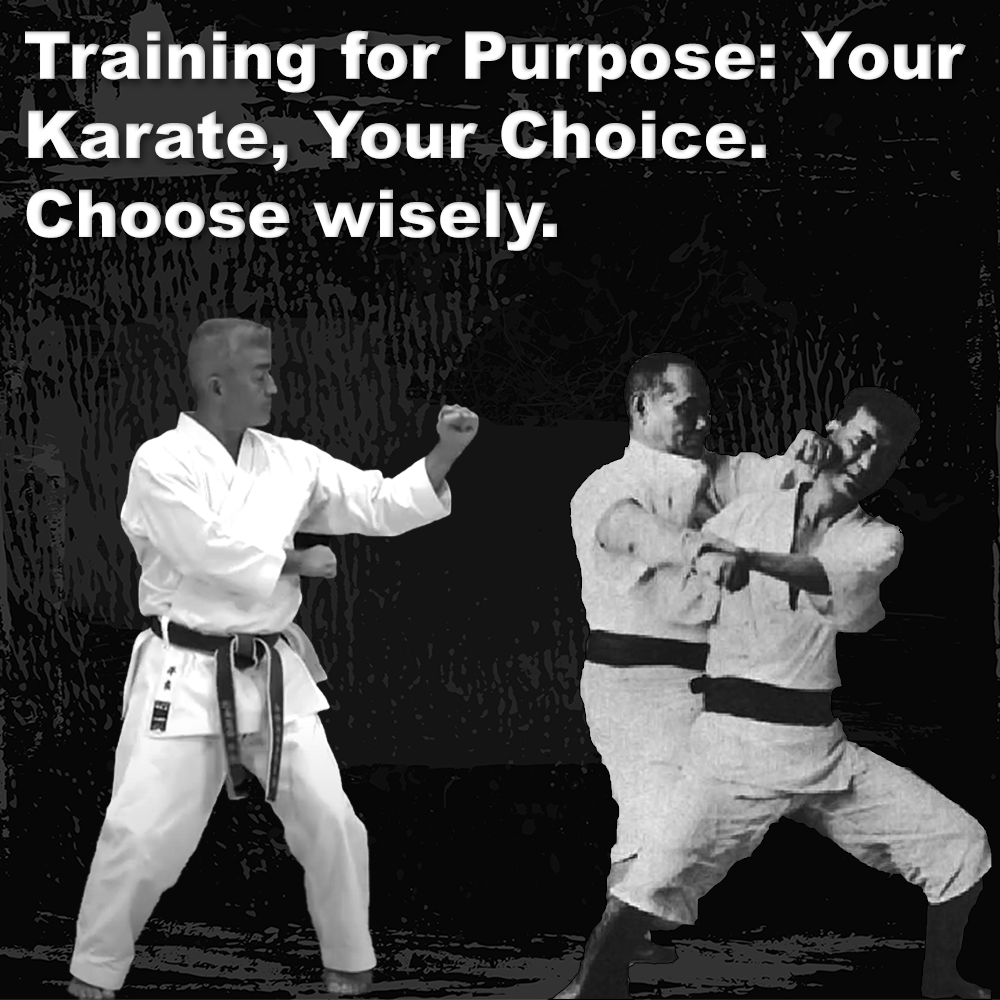
(Approx 2 minute 10 second read)
No one today has experienced a time when there were no karate styles.
.
One of the most significant changes in karate’s history was the creation of different styles and the formation of a standard and a terminology everyone understood. A shift that was necessary in order to teach to larger groups of people, all doing a similar thing in an orderly and safe manner.
.
The creation of styles in the early part of the 20th century, and the accompanying standardization, brought about a more formalized program of instruction. This made it possible to teach a particular method anywhere in the world while maintaining consistency.
.
Everyone practicing today does pretty much the same thing, with only slight variations here and there. We could probably visit a dojo on different sides of the world and be able to pick up the gist of the practice pretty quickly. There’s a sense of comfort in clearly defined requirements and standards, and for many, this structure is appealing.
.
Of course, there are exceptions – some good, some not so good. The karate we recognize as traditional karate-do today was reshaped in the early 1900s basically for school programs. Its purpose was to develop fit, healthy minds and bodies, and this required a curriculum everyone could follow. And over time, this gave rise to what we now call traditional karate-do.
.
However, there was a time when karate was taught very differently. Instruction was often one-on-one or with a small group, tailored specifically to the needs and abilities of the individual student. This contrasts sharply with modern methods, where an established curriculum requires all students to conform to the same framework.
.
For karate to grow, survive, and become widely practiced, there was simply no effective way to teach large groups without some level of standardization. But this shift also marked a change in focus.
.
Is one approach better than the other? That depends on the goal. One aims to improve health, create a sporting environment, and perhaps develop the character of its participants; the other is focused on imparting highly effective combative skills to a trusted few.
.
To a degree, traditional karate-do mirrors the classical karate of old the way a painting reflects a landscape. It may capture the essence, but it remains just an image – a standalone creation.
.
The practical, pragmatic karate, on the other hand, strips away the ornamental and returns to functionality. It’s about doing what works when it matters most.
.
Where traditional karate-do often embraces sport, formality, and precision, pragmatic karate has its roots in a more self-defense and adaptable method. The difference isn’t just in appearance but in purpose.
.
Karate’s evolution has provided us with options. Whether your path leans towards the discipline and structure of modern karate-do or the raw, practical approach of pragmatic karate, the choice is, of course, yours. Even the term you use to describe your karate reflects your own perspective and approach.
.
Of course, there is no reason why you cannot practice both. But remember, you will react how you train the most. At times of need, make sure the choice is the right one.
.
.
Written by Adam Carter – Shuri Dojo, inspired by Rich Stamper
